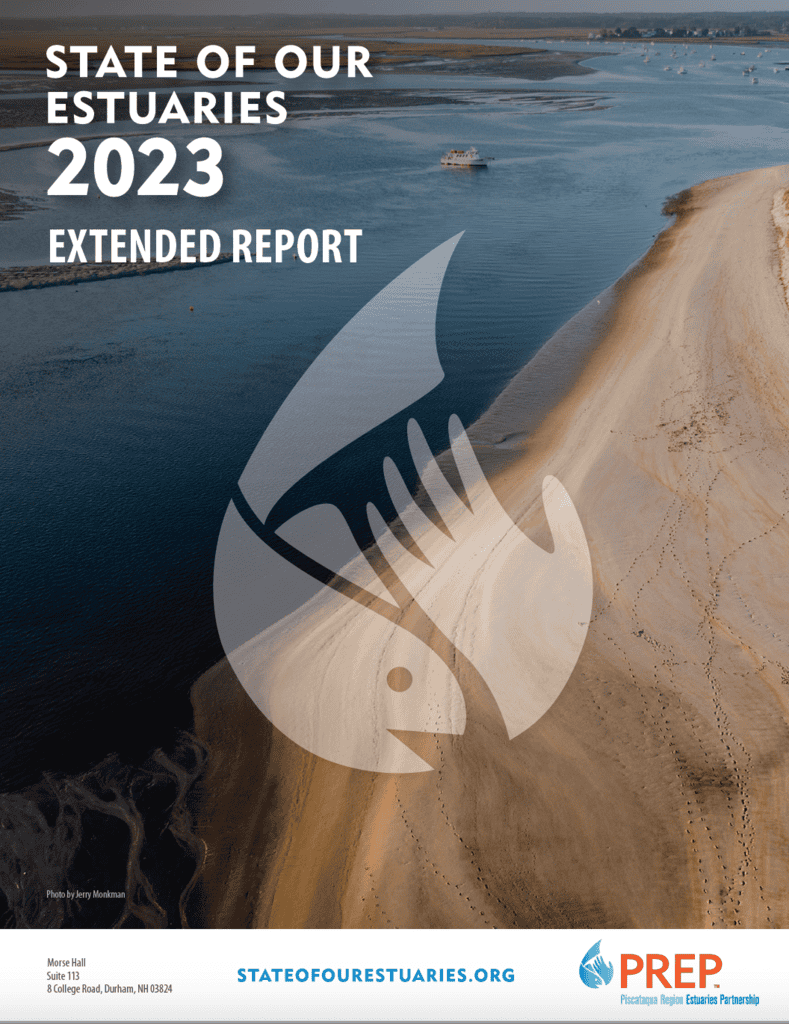2023 Extended Report

The Extended Report (online only) serves as a companion to the State of Our Estuaries Report, and includes expanded results, discussion, methods and data source details for many sections of the State of Our Estuaries Report.
The Extended Report also includes Special Features and Supporting Variables sections. To learn about horseshoe crabs, lobsters, green crabs, saltmarsh sparrows, temperature, wind, pH, Photosynthetically Active Radiation, precipitation, eelgrass and seaweed biomass, and human population within the Piscataqua Region Watershed, head to the Extended Report.
Please note that the State of Our Estuaries Report and the Extended Version do not have overlapping information. The main content about the health of the estuaries is found in the State of Our Estuaries Report, while the Extended Version has additional information on methods and other ecosystem variables not described in the Report.
Interested in a specific indicator? Explore each section of the Extended Report below.
Table of Contents
I. Indicators
Includes methods, data, and additional discussion not included in the Summary Report. For content only in Printed Edition, including information on some indicators that don’t have “Extended” versions (e.g., eelgrass, oysters, etc.) and so are not included here, see the State of Our Estuaries Report.
Impervious Cover
Conserved Lands
Conserved Lands (Focus Areas)
Nitrogen Loading
Nutrient Concentrations
Phytoplankton
Total Suspended Solids
Bacteria
Softshell Clams
Beach Advisories
Migratory Fishes
Toxic Contaminants
II. Special Features
Includes information on important species and variables that are not currently considered indicators.
Saltmarsh Sparrows
Green Crabs
Horseshoe Crabs
Lobsters
III. Supporting Variables
Includes variables that do not meet all the criteria to become indicators but are nevertheless important. See “Introduction” in the Extended Report for more on indicator criteria.
pH, Salinity, Wind, Photosynthetically Active Radiation (PAR)
Precipitation
Eelgrass and Seaweed Biomass (from Tier 2 Monitoring)
Human Population (for Piscataqua Region Watershed)